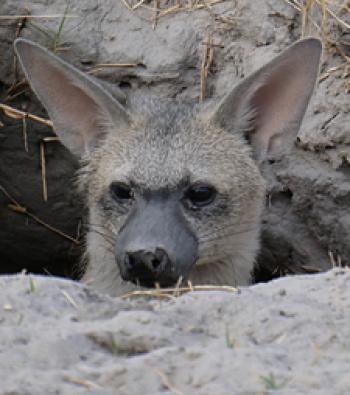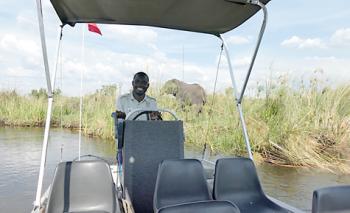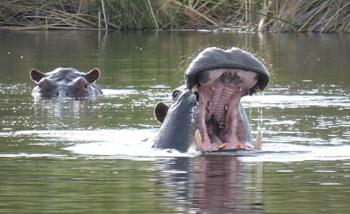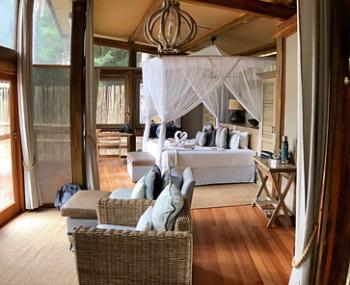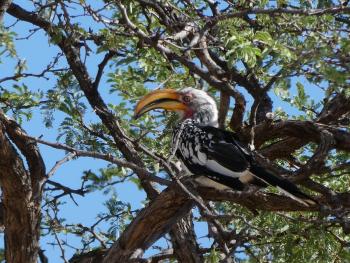Tips for a custom safari in Botswana
This item appears on page 12 of the November 2019 issue.
While researching safari destinations in early 2018, my husband and I read Paula Adams’ article about her custom Botswana safari (April ’18, pg. 33) and decided that was what we were looking for.
Based on her recommendation, we worked with Roger Turski at Safari Lifestyles (Maun, Botswana; phone +267 7606 1186, safarilifestyles.com).
We, too, highly recommend him. He responded promptly to emails and planned a safari suited for us.
Our total cost for a 10-day safari, with the land package and internal flights, was $10,152 for two. (We paid separately for flights between Boston and Johannesburg and Johannesburg and Maun.) In Johannesburg, we overnighted near O.R. Tambo International Airport at the Protea Hotel by Marriott, which offered a free shuttle.
As inexperienced safari travelers, we had many questions. We thought the answers we found might help others who are considering their first safaris.
WHEN TO GO? — For our 2018 safari, we decided on early December, since we knew it was uncrowded that time of year, prices would be low, and wildlife viewing would still be very good.
Although it was the start of the rainy season, we had only two rainstorms during our trip. Afternoons were in the mid-90s, mornings and evenings were pleasant, and overnight temperatures were comfortable.
There were usually only 10 to 12 guests in a camp, and one night there were only four. Our safari vehicles carried a maximum of six people in three rows of two, but usually there were only three or four passengers, and sometimes we were the only ones.
As it was birthing season, we saw babies of almost every mammal. Even baby warthogs are cute!
WHERE TO GO? — Although we chose to stay primarily in national parks, which have fewer vehicles and allow off-road travel to follow the animals, we included the Central Kalahari Game Reserve to see black-maned lions.
We went to three regions and stayed in four camps: Central Kalahari Game Reserve (Tau Pan, two nights), the Okavango Delta (Splash Camp, three nights, and Camp Okavango, two nights) and Linyanti (Lebala, three nights).
• The Central Kalahari was very dry but, surprisingly, filled with wildlife. We saw a steady parade of giraffes, lions and kudus at the watering hole within view of the lodge. Honey badgers, bat-eared foxes and bouncy springbok were sightings unique to Tau Pan for us.
• The Okavango Delta is an amazing geographical area. Splash, a mixed camp (offering both land and water activities), is where we saw the greatest variety of mammals although not in large groups. For us, sightings unique to Splash included Cape buffalo, wild dogs, an aardwolf, baboons, cheetahs, a nocturnal civet and springhares.
• Camp Okavango is a wet camp on a delta island. We had two unforgettable afternoon rides through miles of reed-and-papyrus-bordered channels, spotting monitor lizards, elephants, crocodiles and submerged hippos (who eyed us warily, as we did them!).
Without this wet camp, we would have missed out on some of our most memorable experiences because our one boat trip at Splash was cut short by thunderstorms.
Camp Okavango also led walking safaris. Although hesitant, we went on one, observing antelope, elephants and the remains of a red lechwe. It felt good to walk around, though the terrain was rough.
• In Linyanti we drove through deep, sandy ruts and muddy marshes. We saw animals in large groups, such as dozens of impalas. We spotted the elusive sable, the nocturnal serval and many amazing birds, including a rosy-throated longclaw — a rare sighting.
WHICH CAMPS? — Roger had suggested various camps, and we chose the three Kwando camps (Tau Pan, Splash and Lebala) for these reasons: (1) Wildlife viewing is their priority, and they provide a tracker and a guide on every ride. (2) They are relaxed and informal. (3) They are upscale, comfortable and well run. (4) At that time, there was a discount for staying a minimum number of nights.
Tau Pan and Lebala are a little older. Splash is new.
Camp Okavango, run by Desert & Delta Safaris, is stunning and luxurious, set in a tropical environment of palm trees, giant ferns and playful monkeys. We loved it!
We stayed in permanent, heavy-sided tents on wood platforms with built-in doors and windows at the Kwando camps and in a beautiful detached suite at Camp Okavango. All were spacious, including comfortable beds, sitting areas, en suite bathrooms with double sinks, and indoor and outdoor showers.
Although the usual suggestion is three nights per camp, two nights were sufficient for us in the Central Kalahari and at the wet camp. If time is limited, consider a mixed camp. In hot weather, choose camps with pools!
After arriving in Maun, we were transported by 6- or 12-seat charter aircraft from camp to camp. The pilots were very competent, and we were met by camp guides at each airstrip. There was no set schedule; we were given the departure time the day before we left each camp.
FOOD & DRINK — In the camps, everyone ate together at long tables. The food — homestyle cooking — was varied, well prepared and tasty.
Kwando breakfasts were simple — cereal, muffins, coffee and yogurt. Breakfast at Camp Okavango was a full affair — eggs cooked to order, bacon, sausages, cereals, fresh fruit, yogurts, breads, pastries, cheeses and cold meats.
Lunch buffets offered entrées such as fish cakes and chicken kabobs plus salads, homemade bread, fruit-and-cheese platters and eggs cooked to order.
Teatime had both sweet and savory snacks.
Dinner mains included beef Burgundy, chicken roulade and lamb stew, all delicious. There was always a vegetarian entrée and many vegetable side dishes.
Both filtered and bottled water were available as well as wine and beer at no extra cost.
GUIDES & RIDES — For game drives, you’ll be assigned a guide and will share the vehicle with the same guests as long as they’re there.
Be considerate of fellow passengers. Limit conversation, especially when viewing wildlife. (I have a fabulous video of hippos but with an unwanted audio background of another passenger describing another experience, interrupting the hippos’ sounds.)
If your vehicle is repeatedly full, take your turn in the back row. This means being agile and strong enough to climb into that higher row as well as being willing to accept a rougher ride. My husband suffered serious back pain after the last camp because we sat in the third row more than our fair share.
SAFETY & HEALTH ISSUES — The camps were unfenced, which was part of the attraction, but we never felt unsafe. A guide would walk us to our tent after dinner and warn us to say inside. (We did hear hippos snuffling outside our tent during the night at Lebala.) Every room in every camp had a foghorn-type device for use in a true emergency.
Although the guides were unarmed in camp and on safari, they had been professionally trained and government licensed. They recognized which animals were habituated to the vehicles and knew when to either wait or proceed.
The CDC website recommends specific antimalarial medications for Botswana plus a few vaccinations. We took many over-the-counter meds, but the only one I used periodically was an antacid.
It is important to have emergency-medical-evacuation insurance. Be aware, however, that you cannot be evacuated during the night from the small, unlighted airstrips.
TIPPING — We never needed pula (the Botswana currency). Land costs and internal transportation were prepaid. We paid for souvenirs in the gift shops by credit card, which did incur a 3.5% fee.
American dollars were accepted for tips. A basic guideline for tipping seemed to be $10 per person per night’s stay for the guide, $10 per person per night for the tracker (if provided) and $10 per person per night for the staff as a whole. We gave our tips upon departure at the airstrip or when leaving each camp.
ELECTRONICS & MORE — At the new camps, electronics could be charged in the rooms. At Tau Pan and Lebala, batteries or phones had to be charged at the main lodge.
Take your own adapter plugs (three straight, not slanted, prongs — the same as in South Africa).
I recommend that women take their own hair products. Only Camp Okavango had in-room hair dryers. (I don’t think Kwando’s electrical system could handle them.)
Take a flashlight for nighttime use and headlamps for bedtime reading, as lights can be dim.
We found the Bradt “Botswana Safari Guide” to be very informative.
Botswana is a fabulous destination for a wildlife safari. We saw nearly 40 species of mammals and four of reptiles and 110-plus species of colorful, fascinating birds.
The country has a well-run tourist infrastructure and friendly, gentle people. You will have an amazing, unforgettable adventure!
CYNTHIA KENNETT
Brunswick, ME

